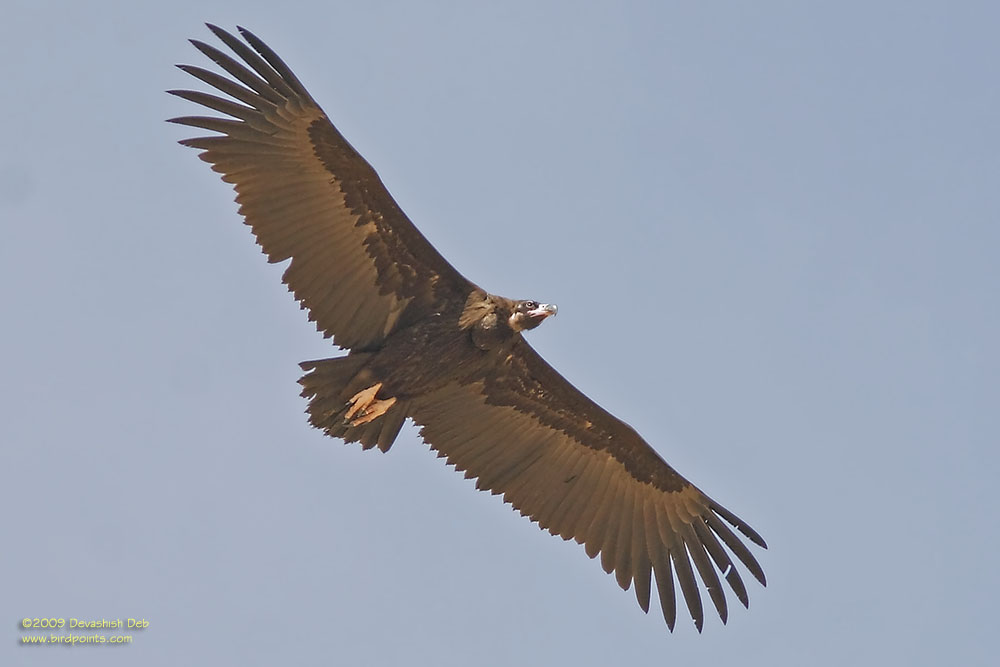|
|
|
Cinereous
Vulture
|
Aegypius
monachus
|
|
29 April
2009
|
| Full
Species (monotypic); i.e. no subspecies/races
Aegypius monachus; Linnaeus, 1766 |
Pls use the mousewheel
to zoom in/out (Max 2X) |

|
| Near Ramdevra, near
Jaisalmer, Rajasthen, India, 1 March 2009
Juvenile in flight |
Historical
1190. Vultur monachus. The Cinereous Vulture. Vultur monachus, Linn. Syst. Nat. i, p. 122 (1766); Blyth, Cat. p. 32; Horsf. & M. Cat. i, p. 1 ; Jerdon, B. I. i, p. 6; id. Ibis, 1871, p. 234; Hume, Rough Notes, p. 1; A. Anderson, P. Z. S. 1871, p. 675; Adam, S. F. i, p. 367; Sharpe, Cat. B. M. i, p. 3; Butler, S. F. iii, p. 441; v, p. 226; Blanford, S. F. v, p. 245; Hume, S. F. vii, p. 321; id. Cat. no. 1 ; Scully, S. F. viii, p. 217 ; Barnes, S. F. ix, pp. 214, 450; C. H. T. Marshall, Ibis, 1884, p. 405; Barnes, Birds Bom. p. 2; St. John, Ibis, 1889, p. 149. Distribution. Southern Europe, Northern Africa, and eastward through South-western Asia and parts of Central Asia to India and China. In India this bird is resident in Afghanistan and the Himalayas, and visits North-western India in the cold season, having been observed in the Punjab, Sind, North-west Provinces, and Oude, Guzerat near Ahmedabad, Mhow, and Saugor. It ranges in the Himalayas as far east as Bhutan. Habits, &c. Those of the family. The nesting does not appear to have been recorded within Indian limits, though there can be no doubt that this bird breeds in the Himalayas. In Europe it breeds about February or March, sometimes on cliffs, more often in trees ; builds a huge nest of sticks, and lays a single egg (very rarely two) richly marked with dark red, and measuring about 3.7 by 2.6. . |
About/Terms of use etc. at the home page
Copyright © 2006-2009 birdpoints. All rights reserved.